We have all been there – bold strategic aspirations, full day planning events, strategy departments churning out brilliant visuals and detailed environmental assessments. All the leaders are required to attend, engage in “dialogue” in a room of hundreds, and then the strategic plan is presented to the Board of Directors and approved. Check the box; the Chief Strategy Officer delivers…but now what?
Think about your organization:
- How do you keep the strategic plan alive beyond the year-end rush to dust it off and report progress to the Board?
- How do you bridge the gap between aspiration and execution?
- How do you translate the idea to bite-sized chunks so those closest to the action know their role to play?
- How do you foster a productive tension in the organization to engage leadership to truly lead the charge?
- How do you define the right metrics, objectively measure progress, phase the work, and communicate the resource needs proactively?
In my experience, the secret sauce is what I call a Strategic Translator. You need to identify and train a specific internal leader (a.k.a. Strategic Translator) to orchestrate your efforts in turning strategy into action. Understanding and implementing on a strategy requires a lot of stakeholder dialogue, testing of assumptions and buy-in from many levels in the organization. This work by a single individual will make a world of difference in mitigating frustration and wasted effort, take the guess work out of what the strategic plan really means, help stakeholders to see their role to play and will align the organization to support good people in doing the right things. Plus, everyone will be able to see, through objective metrics and visualization, how you are performing against the strategic intent.
So what role would this Strategic Translator play? Let’s get pragmatic and detailed:
- Meet with the executive sponsors for each of the strategic areas. This is the Strategic Translator’s role to assist in understanding the intent, scope, aspirations, and translation of key metrics and how to best sequence the work. An example would be: don’t expect to decrease heart failure readmissions if the first available primary care appointment is 3 weeks out and the clinical evidence says that patients should be seen in 3 to 5 days post discharge. Focus on the process of access before setting an aggressive readmission goal. Consistently seeing “red” on scorecards with poorly planned metrics and implementation tactics diminishes the spirit of well-intended teams. By partnering with the executive sponsors to identify the best and most meaningful metrics, this will help engage leadership to lead the charge.
- Identify and collaborate with the business owners for the individual strategic initiatives to determine and define the key metrics and goals. Include both process and outcome metrics so those engaged in the work can see progress to the goal and performance. Your Information Services and Business Intelligence teams will appreciate your proactivity and engagement in developing these ahead of the end of year rush.
- A critical component to strategy translation is engaging the organization in terms of what will be different and what the changes will look like. A great way to illustrate this is by use cases – a pragmatic demonstration with real live work. Present this to as many stakeholder groups as possible to engage, debate, receive feedback, and gain buy-in.
- Develop driver diagrams to more fully understand the tactics that will drive the outcomes. How should this work be phased? Can it be realistically completed in a year? If not, build out those areas that require a multi-year effort to realize the strategic goal. Use of visual driver diagrams also serves to articulate the work in support of the strategy in a meaningful way.
- Determine if the necessary analytic and performance improvement talent exists in the organization to support the work. The strategic initiatives should be part of existing committee’s agendas. If they are not, realign resources to support this work, re-adjust existing committee agendas, and methodically manage committee agendas to maintain pace and focus throughout the year.
- Ensure you have an executive team that routinely reviews progress to the strategic plan by monitoring the metrics on an organizational strategic scorecard report and deeply engages in discussions on progress, obstacles, and resourcing. Identify skill gaps early on and develop plans to train or attain identified competency gaps. If your strategic plan scorecard is more than 90% green, ask questions; chances are this is due to subjective measurement and may not be entirely accurate. Most importantly, remember that all change involves people, those human beings we all work with every day. An organization’s political dynamics and culture can pose significant obstacles in attaining the strategy.
- Make the scorecard report transparent, easily assessable, and available to all staff which will help to keep the strategic plan alive and understood throughout the organization.. Also include the progress to the strategic plan as agenda items at leadership forums, employee forums, and other key meetings.
- Silos and lack of alignment are typically the most significant barriers for attaining the strategic intent, yet “integration”, “system”, “partnership”, and “network” are frequently used words in strategic plans. Many organizations continue to reward and measure performance based on individual or organization-specific measures. If your goal is to decrease preventable readmissions, all disciplines’ (physicians, administrators, and support departments) incentives should be uniformly aligned around this goal. The power of many far exceeds the efforts of a few.
Who ultimately benefits by implementing the Strategic Translator role? Clearly the entire organization that now understands what the strategy means, how it will be measured and their role to play. But most importantly, it is the patients and families that benefit from a vision that is more pragmatically delivered on their behalf.
